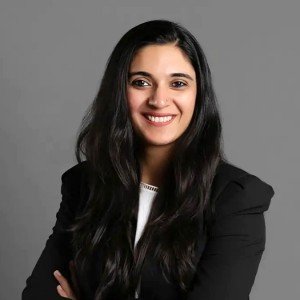Generative AI and fair use/fair dealing
31 August 2023

Generative artificial intelligence (AI) has emerged as a powerful tool for creating and manipulating digital content, be it text, images or music, simultaneously spotlighting the scope of copyright law, particularly fair use.
In India, copyright law is governed by the Copyright Act, 1957, which is crucial to understanding the interplay between generative AI and fair use.
Generative AI includes the use of algorithms and machine learning techniques to generate new content. It enables computers to autonomously create works that imitate human-created content. From texts, images, art to songs in famous singers’ voices, the generative AI landscape is growing by the day with its potential being realized in real time. At the same time, it has also raised concerns around copyright owners’ rights.
AI systems are trained to create artistic, literary, musical, or visual works through large amounts of data, and may involve making digital copies of existing copyrighted works thus posing a risk of copyright infringement. It also creates uncertainty around ownership over the AI-generated content and unsolicited use of original works as references.
Fair use (in the United States) and fair dealing (in India, the United Kingdom, and Canada) are legal doctrines with certain exceptions, allowing limited use of copyrighted material sans the copyright owner’s authorization under circumstances such as for criticism (including satire), commentary, news reporting, teaching (including multiple copies for classroom use), research, and parody. These non-exclusive factors are enshrined under Section 107 of the Copyright Act of 1976 in the United States.
In common law jurisdictions, fair dealing is statutorily provided, such as in Section 52 of India’s Copyright Act, enlisting non-exhaustive exemptions from copyright infringement. These include, inter alia, reproduction for personal use, research, criticism or review, reporting current events, judicial proceedings, and educational purposes. The Indian courts in News Service Pvt. Ltd. and Ors. v. Yashraj Films Pvt. Ltd. [FAO (OS) 583/2011 Dt. 21-08-2012] have also considered the doctrine of fair use, including the four factors discussed above, for determining whether a work can be exempted from copyright infringement.
Using generative AI for content creation challenges the application of fair use/fair dealing doctrines. In such cases, one may consider whether the AI generated work is a derivative work meant for commercial exploitation, or for educative, research, teaching, or other purposes. One may also look at the transformative nature of the AI-generated output to see if it transforms the original work, or merely supersedes it.
That said, AI generated works usually involve complex steps before returning an output based on the users’ text prompts. This may involve various tools to understand the relationship between the prompts and the associated copyrighted images collected by the AI system, creating clusters of similar text-image pairs and the representations of images with similar text-image combination, which may not necessarily be copied images . Such steps can be key to determining if the AI-generated output is inherently transformative to be excepted under fair use.
The judicial determination of whether AI generated works, created using copyrighted works, can be protected as fair use or not, is currently evolving. In the United States, a class action lawsuit was brought by three artists in 2022 in Andersen v. Stability AI Ltd. et al before the San Francisco Division of the United States District Court’s Northern District of California against multiple generative AI platforms, alleging their copyrighted images were being unauthorizedly used by the AI platforms to train their models for AI image generation products, and allowed users to generate unauthorized derivative works. The plaintiffs alleged that the AI-generated works are derivative works, as copies of copyrighted images. It is to be seen whether the court considers AI-generated images as derivative works, especially when complex technical steps are involved in creating the output.
Similarly, in February 2023, the image licensing company Getty Imagesfiled a lawsuit against an AI company in the United States District Court of Delaware (Getty Images (US), Inc. v. Stability AI, Inc.), alleging that the latter had unauthorizedly copied more than 12 million photographs of its collection and removed or altered its copyright management information, provided false copyright management information, and infringed its trademarks. The court is yet to consider whether using copyrighted images or trademarks for training generative AI systems, would constitute fair use.
In the case of Author’s Guild v. Google, Google had used digital copies of print books to create Google Books. This was challenged by the original authors of the print books. The Second Circuit Court of Appeals found Google’s act of digitizing and storing copies of the print books to create a text-searchable database constituted fair use. It also considered the factor of purpose under the fair use principle, and observed that Google’s purpose was different from the authors’ purpose since the former was not using the books for their content, as the books were considered necessary to build Google’s database of books and served a different purpose from the original, which was fair use.
The amount and substantiality of the copyrighted work used by the AI tool is another determining factor. In the Google Books case, the court observed that Google did not permit complete access to the print books, but rather revealed snippets to its users. Per the court, the better question to determine was not the amount of printed books copied by Google, but the amount of the original work made available to online users. Similarly, for an image-generating AI tool, it may be necessary to determine whether the original work was stored and reproduced entirely, or used only to the extent of learning what the copyrighted images represented, in order to create the new images based on text-image combinations.
Keeping up with the rapidly developing AI landscape, the European Commission and others developing regulations on AI, while the United States is adjudicating key copyright issues. Nonetheless, restricting generative AI models to train from non-copyrighted data may impact innovation. Therefore, a balance must be achieved between innovation and copyright holders’ rights.



-preview.jpg)





